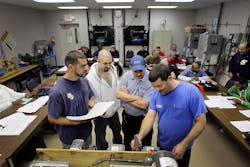Demand in HVAC Market to Reach $20.4 Billion by 2019
Those in the HVAC business have some good days to look forward to, if a new study from The Freedonia Group, Inc., holds true. The report, run by InvestorIdeas.com, said the demand for HVAC equipment in the U.S. will increase 6.8 percent each year until 2019, where it will reach $20.4 billion. The report notes that this is twice the rate of growth of the 2009 – 2014 period.
In large part, advances will be the result of robust gains in building construction spending, especially growth in improvement and repair expenditures as replacement demand contributes approximately three-quarters of total sales in a given year.
Advances will also be propelled by rising demand for increasingly efficient HVAC systems and other products that have greater technological sophistication, as these are typically higher value systems.
However, analyst Kyle Peters points out that, “Federal tax incentives which were targeted at high-efficiency systems installed in the residential market expired at the end of 2014. A number of homeowners took advantage of those incentives and replaced their HVAC systems ahead of schedule, so the pool of units needing to be replaced will be smaller, reducing sales in the short term.”
Visit InvestorIdeas.com to read more from this report. How do you see the HVAC market doing in the coming years? Let us know in the comments or join the discussion in our LinkedIn group.
